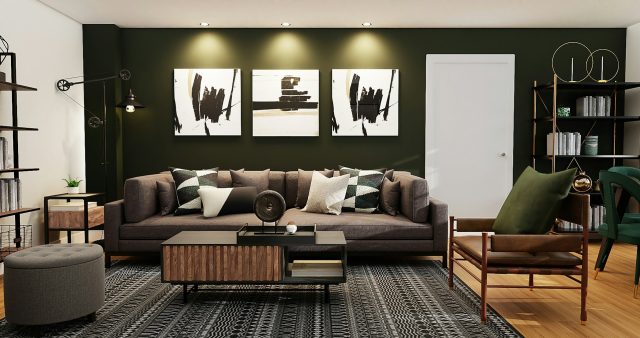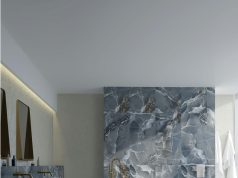
The field of interior design aims to create aesthetically pleasing and cozy environments by fusing practicality and beauty. Artificial intelligence (AI) has become a potent tool in recent years that’s transforming the way designers tackle their work.
We’ll look at how AI-assisted design for interiors is changing the business and encouraging more creativity and innovation in this piece.
Interior Design’s Evolution
Throughout history, the discipline of interior design has experienced tremendous transformation. The profession has developed into a diverse field from its early days, when it mostly included replicating the works of experts to the mixing of various styles and, ultimately, the investigation of innovation.
The three phases of interior design—creativity, blending, and coping—have influenced how designers handle their work and realize original ideas.
AI’s Role in Interior Design
Interior designers have been debating AI for a long time. It’s viewed as a useful tool that can improve the design process by some, while others worry that it will eventually replace human designers. AI can undertake technical and repetitive jobs, saving designers time and giving them more options. It can give new opportunities, expedite the process, and make it more fluid.
AI, however, is limited and can’t take the role of human creativity and interaction, which are essential components of interior design.
What’s Interior Design Aided by AI?
The term “AI-assisted interior design” describes the application of machine learning and algorithmic tools to support interior designers during the design process.
Large volumes of data, including client preferences, design trends, materials, and architectural details, can be analyzed by these AI systems, which can then produce personalized and aesthetically pleasing design suggestions.
These are 5 reasons to use AI in interior design…
Creation of Personalized Design Concepts
The capacity of AI-assisted interior design to produce highly tailored design concepts is one of its most notable benefits. AI algorithms are able to provide design solutions that are customized to the unique needs and preferences of each client by analyzing data received from them, including aesthetic preferences, preferred colors, and precise space requirements.
These personalized designs may have various furniture arrangements, color schemes, lighting arrangements, and room layouts. Designers can work with clients to develop and modify ideas in accordance with their preferences, using these proposals as their foundation.
Design Flow and Space Optimization
AI is also being applied to interior design projects to enhance design flow and maximize space. To optimize the value and effectiveness of the design, AI algorithms can examine the individual needs and actions of the users, along with the size and particulars of the area.
AI algorithms, for instance, may assess people flow, furniture placement, and lighting in an office design venture to provide an environment that promotes productivity, teamwork, and employee well-being. In order to create the best possible working environment, this may entail carefully placing workstations, meeting spaces, and breakout places in addition to making the most of artificial and natural lighting.
Trend Evaluation and Suggestions
The subject of interior design is always changing as fresh styles and trends appear on a regular basis. AI advancements have made trend evaluations and suggestions more available than before. This enables designers to provide their clients with new, contemporary solutions and stay up to date on the newest trends. Furthermore, artificial intelligence algorithms have the capability to suggest materials, furnishings, and accessories that align with the tastes and design aesthetics of individual projects.
An essential component of interior design is an assessment of trends. In order to create distinctive and enticing places, designers are continuously searching for fresh concepts and methods. Designers can use AI to uncover emerging patterns and trends by utilizing sophisticated algorithms that scan vast volumes of data, including pictures, social media posts, and trade periodicals.
These AI systems are capable of autonomously analyzing and categorizing textual and visual content pertaining to interior design. They are able to identify particular hues, forms, patterns, and design components that are in vogue at any given moment. Designers can use this knowledge to stay up to date on current trends and obtain new ideas for their projects, which makes it valuable.
AI is capable of trend analysis as well as tailored recommendations depending on the requirements and preferences of the user. AI can make recommendations for goods, materials, and styles that suit each customer’s unique preferences by learning about their likes and needs.
These suggestions hinge on algorithms using machine learning that forecast which solutions will be best for each consumer based on past data and behavioral patterns. This greatly enhances the design experience by enabling designers to present individualized options catered to the requirements and preferences of their clients.
AI algorithms, for instance, can assess people flow, furniture placement, and lighting in a restaurant project design to produce a layout that enhances comfort, productivity, or customer and employee well-being. To achieve this, it may be necessary to arrange dining rooms, kitchens, bars, and storage spaces in a thoughtful manner and to maximize both artificial and natural illumination.
Another example: AI algorithms can assess all of the mentioned above for restaurants to incorporate a casino or betting shop layout that will, in addition to enhancing the visitor experience, reduce energy expenses and gain a favorable reputation among guests who care about the environment. This is especially important in the era when online betting platforms among which are the best English betting sites from the list made by Bookmaker Expert have taken the majority of customers away from brick-and-mortar betting venues. To do so, AI will determine what kind of building materials, acoustic management solutions, lighting fixtures, and LED video walls to include.
3D Modeling and Display
In the field of interior design, the capacity to envision and try out many concepts is essential to producing distinctive and useful places. Interior designers now have strong tools in 3D modeling and visualization because of advancements in AI. This essay will examine how AI is changing the process of simulating and visualizing interior design projects in 3D.
Before any building or restoration work is done, designers and clients may preview what a place will look like thanks to 3D simulation and visualization. Historically, actual mock-ups, 2D plans, or hand-drawn sketches were used to accomplish this. But with AI, a whole fresh set of opportunities has become possible.
2D models can be converted into accurate three-dimensional visualizations of spaces by AI systems. This means that designers can experiment with space arrangement, investigate various design alternatives, and test out various material and color combinations by creating 3D virtual models.
When working on remodeling projects where designers have to work with pre-existing spaces, these virtual models in 3D are quite helpful. AI is able to accurately scan an area and provide a 3D model that designers can work with and adjust as needed. This enables them to assess several design alternatives and envision the appearance of suggested modifications prior to doing any tangible work.
3D simulation and visualization are helpful to clients in addition to designers. Clients can see and comprehend the designer’s intent more easily with the use of 3D models. They may virtually walk through the space, look at details, and get a good concept of how it will look when everything is finished. This guarantees that both the consumer and the designer are in agreement and facilitates the process of making well-informed selections.
Additionally, AI can raise the caliber of 3D visuals. AI systems are highly realistic in simulating materials, lighting, and textures. This helps clients obtain a more realistic concept of how the finished area will look and makes renderings more compelling.
Cost Savings and Increased Efficiency
To get great results, interior design is a complicated process that takes time, energy, and resources. But now that AI has advanced, interior designers can lower project expenses and increase project productivity. Here, we describe how AI is changing interior design by increasing productivity and cutting expenses.
The potential of AI to optimize and streamline laborious, repetitive operations is one of the technology’s most notable applications in interior design. Processes like creating budgets, creating bills of materials, and managing inventories can be automated by AI algorithms. This allows designers to concentrate on more imaginative and tactical work by freeing up time and resources.
AI can also help with space design and planning. AI algorithms are capable of proposing effective area layouts and designs through the analysis of 3D data and models. This includes arranging furniture to best suit the space, choosing appropriate lighting, and ensuring easy movement around it. These AI-driven suggestions enable designers to optimize limited space and make well-informed judgments.
AI is also quite helpful when choosing finishes and materials. In order to make recommendations that fit the project specifications and budget, AI algorithms can evaluate data on the availability, affordability, and durability of various materials. This helps designers make decisions more quickly and effectively by removing the demand to manually investigate a large number of options.
AI can also streamline interior design teamwork and communication procedures. Real-time concept, feedback, and revision sharing between designers and clients are made possible by AI-powered collaboration tools. By doing this, communication is streamlined and design delays are prevented. AI can also assist designers in presenting their concepts and ideas in an eye-catching manner, which will facilitate client comprehension and decision-making.
The capacity to carry out more precise cost estimation and budgeting is a major advantage of AI in interior design. AI systems have the ability to forecast project costs by examining past data and pricing patterns. This aids designers in creating reasonable budgets and steer clear of unpleasant surprises while carrying out projects.
AI is transforming interior design by cutting expenses and increasing efficiency. AI helps designers focus on more creative and strategic work by automating monotonous chores, making data-driven recommendations, and expediting communication and collaboration processes. We may anticipate that AI will become more important as technology develops in the interior design industry in terms of increasing productivity and cutting expenses.
AI Apps for Interior Design That We Suggest You Download
Midjourney
In addition to being a trademark of an AI tool that lets users generate graphics from text descriptions, Midjourney is also an independent research lab.
Only a bot on the official Midjourney Discord server, direct messages to the bot, or invitations to a third-party server can be used to access Midjourney. Similar to other AI art generation programs, users enter a description or prompt and execute the “/imagine” command to make images.
RoomGPT
RoomGPT is a web-based tool that converts any room in your house into a variety of decorating styles using image generation algorithms.
This AI system will allow you to picture the room with fresh decorating in a matter of seconds with just a snapshot of the room you wish to decorate and a few choice selections.
Interior AI
An AI tool called Interior AI assists users in creating fresh looks and even new uses for their interior areas.
The application makes use of a user-taken photo or a 2D image of an interior area that was discovered online. Then, this image can be altered to match any of the sixteen pre-selected styles. Users of the program can also choose an alternative function for the space.
Homestyler
With the aid of a very user-friendly program called Homestyler, you can create realistic room designs from genuine photos.
Additionally, it gives you a wide selection of goods from reputable manufacturers. In addition to providing realistic results, Homestyler allows you to create settings from pre-designed rooms.
Interior Designers’ and Sketch Artists’ Future
The future of interior designers and sketch artists has come under scrutiny due to the rise of AI. AI can help with certain technical problems, but sketch artists are skilled in a different way. It’s common for clients to have an idea but struggle to put it into words, thus the interior designer’s job is crucial in helping them turn their vision into a workable design.
AI can’t fully replace human designers’ creativity and knowledge since it needs a profound grasp of the principles of design and a knack for breaking conventions.
Since AI Is Here to Stay, It Makes Sense to Use It as a Tool
In summary, AI-assisted interior design is revolutionizing the field by offering instruments and materials that boost innovation, streamline the creative process, and improve the clientele’s experience. AI gives designers new tools to work with in terms of personalization, space optimization, trend research, and 3D visualization, enabling them to build distinctive and useful places.
We may anticipate that AI-assisted interior design will develop further as technology advances, creating new prospects for the sector.













